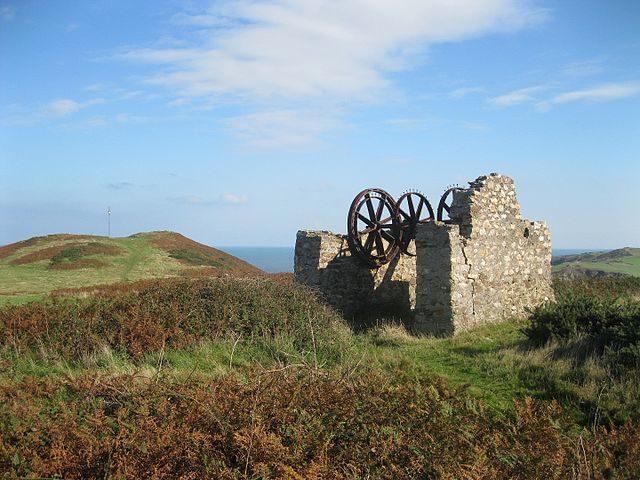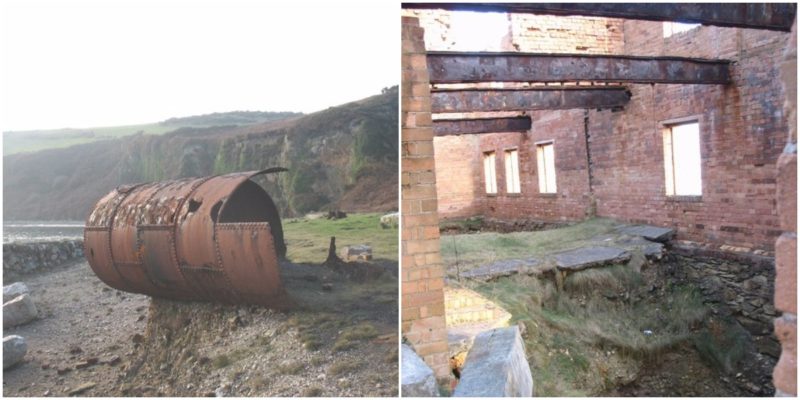Porth Wen Brickworks was a Victorian brick factory that produced fire bricks made from quartzite (silica). These bricks were capable of withstanding a higher temperature than usual red house bricks and were mostly needed for the steel industry, to line steel-making furnaces and kilns. Now the site is abandoned and in ruins. The remains of several buildings and some of the machinery can still be seen but some parts of them are heavily damaged from sea erosion.

It is situated on the western part of Porth Wen (meaning White Bay) in the community of Llanbadrig, on the north coast of Anglesey, Wales. Usually, brick factories are placed on clay bedrock, the most used material for brick production, and often there is a quarry for clay on site.

In the case of Porth Wen Brickworks, it was constructed here because of the readily accessible quartzite from the nearby quarries, which is the main element of fire bricks.


The place where this former factory was erected, as well nearly the whole shoreline of Anglesey, is listed as an Area of Outstanding Natural Beauty (AONB) because of its important and unique landscape.





The ore was first time mined around 1850 using primitive techniques and simple innovations. The ore was extracted from the rock by hand and was transported to the cliff above the brick works by a little railway. There it was rendered to a size acceptable for further processing. The ingenious engineers utilized gravity to transport the ore down to the plant.
Most of the buildings that can be found now at the site were constructed at the beginning of the 20th century. In 1906 the brickworks were owned by German businessman Herr Steibel. He sincerely believed that it would be a profitable business for him, but he didn’t invest enough in modernizing of the process of making bricks and continued with traditional techniques, like wire cutting the ore into shape. In 1908 he sold the business to Charles Tidy. He launched a new method for brick making that used a technique in which the clay was pressed into shape.
But, even with that, Mr. Tidy struggled with managing production. Transport was a big problem for the works. He built a small harbor from where his bricks could be transported by sea. Because of the tides and the rocky seabed there were several small incidents with the loaded ships. The small ships were often battered while in the bay, so many owners refused to transport the bricks because of the possible risks for their vessels.


The whole operation closed down and the place was abandoned at the beginning of the World War I. It was opened again in 1924, but production proceeded with a lot of struggles and without consistence till 1949. Most of the equipment and machinery were moved in Caernarfon sometime before the start of the World War II. Since 1949 the whole site has been completely deserted and left to rust away slowly.

Some of the buildings have survived the demolishing of time, tide and wind. Today the remains of the structures of the former brickworks, like harbor walls, chimneys, terraces, beehive kilns, coastline buildings and other factory buildings, create a ghostly atmosphere in the small bay. The site is protected as a site of national importance. The buildings are full of holes and cracks and visits are potentially dangerous.
